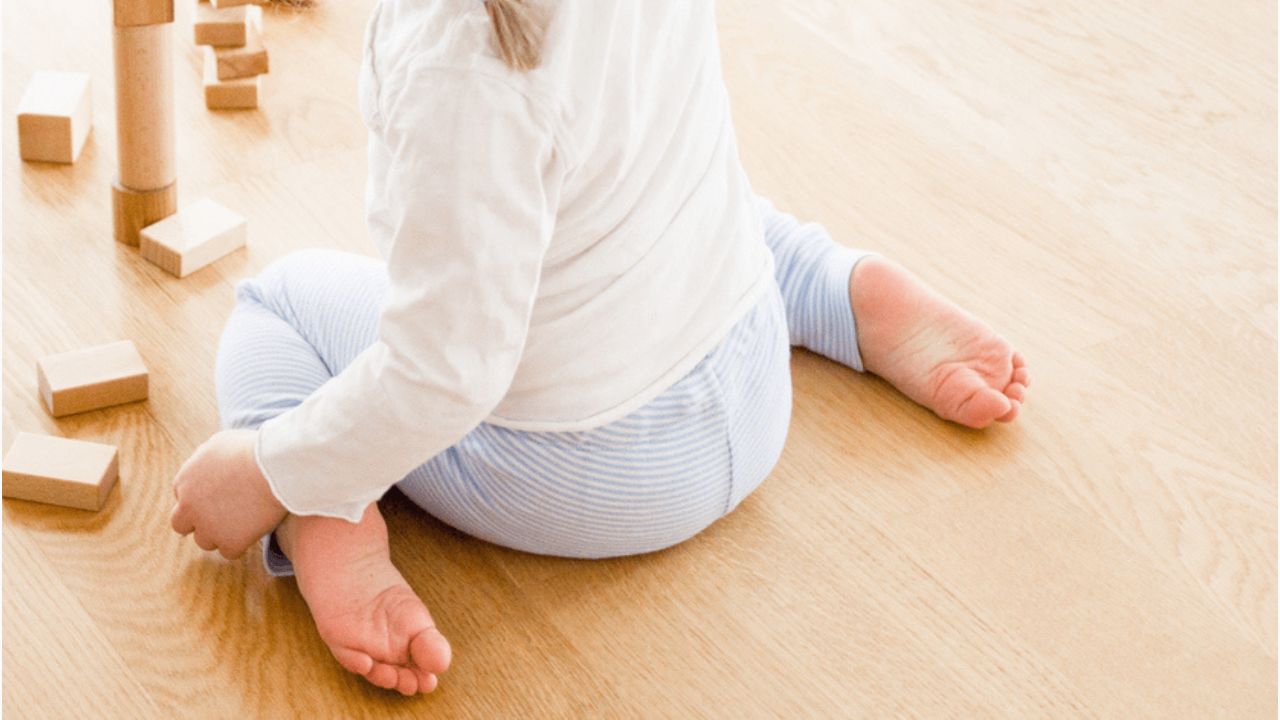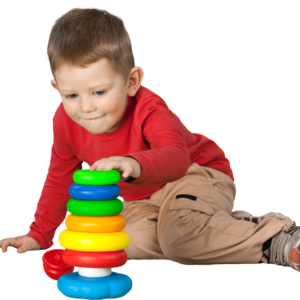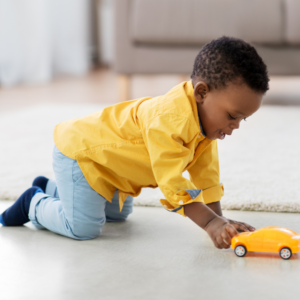6 Things You Should Know About W Sitting

Has your child sat on the floor recently? Obviously that’s a silly question. Sitting on the floor is something all kids do all the time - as they should! They play games, race cars across the room, sit in circle time at school, and listen to stories comfortably on the floor every day. But as you sit on your comfortable couch sipping your coffee quietly and watch your child play happily (I’m kidding, that’s never happened in the history of little kids), have you noticed your child w-sitting?
What is W-sitting, you ask?
This is a sitting position some kids prefer when the hips are rotated inwards, the knees come together and the ankles turned backwards, laying close to your child’s bottom.
Well, actually, yeah- I have noticed my child sitting in a W. Is that a problem? What do I need to know? How do I prevent it?
The first thing to know is your child is not alone- this is so common and is one of the top things preschool teachers notice during morning meetings at school.
Here are the 6 things to help you understand why W sitting is a problem and how to address it:
1. This can be a Sign of Weakness or Low Tone
Sitting in a side-sit or tailor sit (criss cross applesauce) position requires a lot of work from the core muscles. Sitting may be a sedentary activity, but literally everything we do requires our muscles to fire! But, unlike those other seated positions mentioned, W- sitting provides the child (or adult) , with a very wide base of support, significantly reducing the need for the core muscles to engage. A child with low tone who has trouble recruiting the muscles to maintain posture or a child with a weaker core will probably find W sitting much easier to maintain than side-sitting or criss-cross-applesauce. You might even notice that when you correct your child to change positions out of a W, she’ll do so only to then find her way back to that W without even noticing, possibly because the core muscles were fatiguing.
2. W Sitting Affects How Your Child Engages with the World
W-sitting is a more static position, rather than a dynamic one. A static position is one that is more fixed while dynamic positions allow for movement and fluidity to change as needed. When w- sitting, a child is more limited from leaning in all directions or rotating their trunks. This limits her ability to fully engage in her world.
3. It can be Caused by Laxity in the Hip Joints
It’s important to look at all areas of the body when considering the cause for W sitting. There are times when the hip joints have a lot of laxity and allow for more extreme internal rotation, making w-sitting more comfortable. In this case, we would need to focus on building stability in the hips while in proper alignment to build more stability in those joints.
4. It can Put Stress on the Hips and Knees
Whatever the cause for w-sitting may be, this position can have a long lasting impact on the hips and knees. Many adults who were once w-sitters will say they’ve experienced lots of pain in these joints years after their “sitting on the floor” days (other adults will say they’ve had no issues, but let’s try to prevent the former rather than relying on the latter). If your child is only an occasional W-sitter, it’s unlikely there will be any long lasting effects, however trying to remind your child to change positions is still a good idea to prevent it from becoming more habitual.
Now that we understand the concerns with w-sitting, you might be wondering what you can do to help your child avoid it.
5. Prompt your Child
Use hand signals or verbal instructions to change positions. Most children don’t even realize they’re w-sitting in the first place and will respond very quickly when reminded to change positions. Encouraging long sitting, sidesitting, or criss cross applesauce as good alternative positions that won’t cause any stress and require the core muscles to engage. For toddlers, you may have to manually reposition them initially until they understand how to change positions in response to your prompts. Use language like “fix your feet” while repositioning so they learn what they are supposed to do when you remind them.

6. Treat the Cause
In order to really help your child avoid w-sitting, we need to target the underlying cause (weakness, low tone) rather than just treating the symptom (w-sitting). Lots of gross motor play and full body movement will strengthen the muscles, building endurance for longer periods of sitting with better posture. Crawling during play, climbing on playground equipment, squatting and standing to clean up toys, animal walking to go down a hallway (bear walking, crab walking, frog jumping, bunny hops), yoga poses, and obstacle courses will all help build up strength in the core and hips.

Bottom Line:
Children spend a lot of time on the floor for so many of their early years- both at home and at school. Some children feel much more comfortable w-sitting than positioning themselves in more common ways like criss-cross applesauce. There are several reasons why your child might be w-sitting including a weak core, low muscle tone, or hypermobile joints. W-sitting can affect development by preventing a child from fully engaging with their environment. They can’t lean in all directions or rotate their trunks fully in this position. W-sitting can also potentially lead to joint pain later on in the adult years. The best way to help your child avoid w-sitting is by strengthening the core and hips through lots of gross motor play. Yoga, crawling, obstacle courses, and climbing are all great strengthening activities. And finally, redirecting your child with quick reminders to change positions will help build awareness and independence so over time, your child will remember to sit in the alternative ways as their go-tos.
And remember- occasionally w-sitting is ok. The goal of these strategies is to change things for the long game, not to drive yourself- or your child- crazy.





